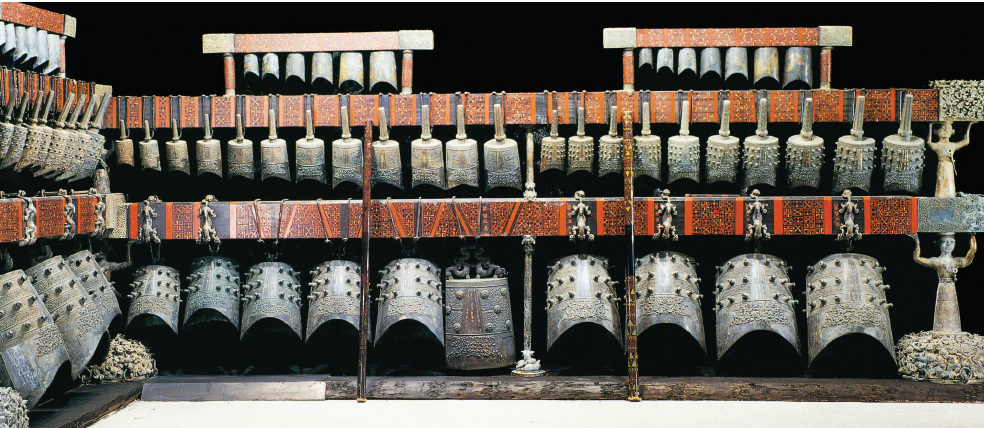Life During the Zhou Dynasty
During the early Zhou period, aristocratic attitudes and privileges were strong. Inherited ranks placed people in a hierarchy ranging downward from the king to the rulers of states with titles like duke and marquis, to the hereditary great officials of the states, to the lower ranks of the aristocracy — known as shi — and finally to the ordinary people (farmers, craftsmen, and traders). Patrilineal family ties were very important in this society, and at the upper reaches, at least, sacrifices to ancestors were one of the key rituals used to forge social ties.
Glimpses of what life was like at various social levels in the early Zhou Dynasty can be found in the Book of Songs (ca. 900 B.C.E.), which contains the earliest Chinese poetry. Some of the songs are hymns used in court religious ceremonies, such as offerings to ancestors. Others clearly had their origins in folk songs. The seasons set the pace for rural life, and the songs contain many references to seasonal changes. Some of these songs depict farmers clearing fields, plowing and planting, gathering mulberry leaves for silkworms, and spinning and weaving.

Social and economic change quickened after 500 B.C.E. Cities began appearing all over north China. Thick earthen walls were built around the palaces and ancestral temples of the ruler and other aristocrats, and often an outer wall was added to protect the artisans, merchants, and farmers who lived outside the inner wall. Accounts of sieges launched against these walled citadels are central to descriptions of military confrontations in this period.
The development of iron technology in the early Zhou Dynasty promoted economic expansion and allowed some people to become very rich. By the fifth century B.C.E. iron was being widely used for both farm tools and weapons. In the early Zhou, inherited status and political favor had been the main reasons some people had more power than others. Beginning in the fifth century wealth alone was also an important basis for social inequality. Late Zhou texts frequently mention trade across state borders. People who grew wealthy from trade or industry began to rival rulers for influence. Rulers who wanted trade to bring prosperity to their states welcomed traders and began making coins to facilitate trade.
Social mobility increased over the course of the Zhou period. Rulers often sent out their own officials rather than delegate authority to hereditary lesser lords. This trend toward centralized bureaucratic control created opportunities for social advancement for the shi on the lower end of the old aristocracy. Competition among such men guaranteed rulers a ready supply of able and willing subordinates, and competition among rulers for talent meant that ambitious men could be selective in deciding where to offer their services. (See “Individuals in Society: Lord Mengchang.”)
Religion in Zhou times was not simply a continuation of Shang practices. The practice of burying the living with the dead — so prominent in the royal tombs of the Shang — steadily declined in the middle Zhou period. New deities and cults also appeared, especially in the southern state of Chu, where areas that had earlier been considered barbarian were being incorporated into the cultural sphere of the Central States, as the core region of China was called. The state of Chu expanded rapidly in the Yangzi Valley, defeating and absorbing fifty or more small states as it extended its reach north to the heartland of Zhou and east to absorb the old states of Wu and Yue. By the late Zhou period, Chu was on the forefront of cultural innovation and produced the greatest literary masterpiece of the era, the Songs of Chu, a collection of fantastical poems full of images of elusive deities and shamans who can fly through the spirit world.
>QUICK REVIEW
What were the most important differences between Shang and Zhou society and culture?